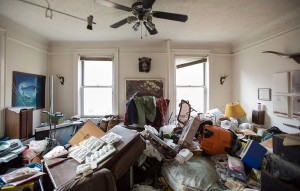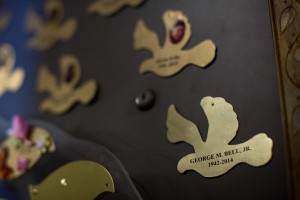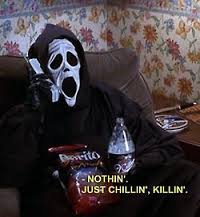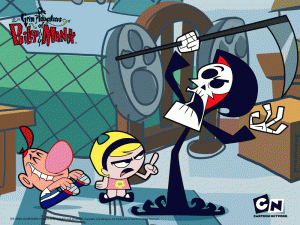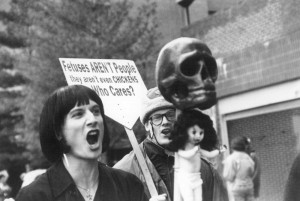On the morning of October 14th, the Newsweek homepage had four top stories: one about a plane crash killing two people in Los Angeles, one about a bridge collapsing in Johannesburg and killing two people, one about the democratic debates, and one entitled “U.S. Could Benefit From the Death of a Top Iranian Commander in Syria”. The final article is what you might anticipate — an explanation of how the recent death of Iranian military general Hossein Hamedani might allow the US to exploit Iran’s temporary distraction and disorganization in order to gain military traction in places like Syria and Yemen. While perhaps timely and important news, the article gave me pause. How, in the same week that our nation has been mourning the deaths of Americans lost to gun violence within our borders, analyzing accidental deaths caused by plane crashes and bridge accidents, and hosting political discussions about all of the above, could we simultaneously be celebrating the death of others embroiled in military conflict? What separates tragic losses from strategic ones? Why, if preventable death matters so much to Americans, does war operate outside of the realm of legitimate inquiry into preventable death?
Death has always been a political topic. Hot-button issues such as gun control, health-care policy, physician assisted suicide, and others all reveal the way in which American politics are strongly infused with a reverence for life and a drive to protect Americans from death. However, while the American public obsesses over spectacular instances of death and death within its borders, as identified in an American Public Health Administration Report, militarism and war have become increasingly prevalent causes of death in places around the world. According to the report:
“The World Health Organization (WHO) Commission on the Social Determinants of Health pointed out that war affects children’s health, leads to displacement and migration, and diminishes agricultural productivity. Child and maternal mortality, vaccination rates, birth outcomes, and water quality and sanitation are worse in conflict zones. War has contributed to preventing eradication of polio, may facilitate the spread of HIV/ AIDS, and has decreased availability of health professionals. In addition, landmines cause psychosocial and physical consequences, and pose a threat to food security by rendering agricultural land useless”
Such facts should not come as a surprise. One need look no further than the five o’clock news or CNN twitter page to discover that American wars and imperial projects around the world have caused egregious accounts of combatant and civilian deaths not only through wartime violence, but through the pernicious environments created by war. However, as our populous and elected officials vigorously interrogate ways to prolong and protect American life, they simultaneously encourage and defend our global military entrenchments, ensuring death for others. Gun violence, breast cancer, and car accidents captivate the American conscience and engender a sense of common commitment to the prevention of death while targeted strikes, un-collected land mines, military accidents, and environmental damage caused my US military occupations kill thousands of people. From Iraq, to Djibouti, to Somalia, to Japan, the US military is an active contributor to undue civilian death. So why are these deaths not on our political radar?
Common acceptance of militarism, of the military as a bringer of peace, and of US primacy as a source of stability and safety are heavily embedded into American culture. The same public health report provides the following insight:
“Militarism is intercalated into many aspects of life in the United States and, since the military draft was eliminated, makes few overt demands of the public except the costs in taxpayer funding. Its expression, magnitude, and implications have become invisible to a large proportion of the civilian population, with little recognition of the human costs or the negative image held by other countries. Militarism has been called a ‘psychosocial disease,’ making it amenable to population-wide interventions”
While more and more people are learning about population health issues and threats to human life, fewer are being forced to call into question the implications of US foreign policy and the risks it entails for civilians around the world. Influenced by the military industrial complex’s infection of academia, policy, and media, those who trouble themselves over death and dying often fail to expand their frame of reference to interrogate the US’ complicity in the production of death, passively consuming geo-strategic explanations of the “utility” of the death of others. Accidental death in LA is a tragedy; accidental civilian deaths in Yemen, Iraq, and Somalia are an invisible but ongoing reality, and the death of enemy combatants and opposing forces are “opportunities.”
The passivity and comfort with which the American public consumes news about death in wartime is anything but benign. The acceptance of military deaths as part of a strategic set of calculations that operate outside of standard civilian concerns carries heavy implications for the ways we accept or reject militarism and the ways we relate to and construct individuals in American war zones.
News articles like the one on Hamedani’s death may just seem like reporting, but such representations of death as “strategic” subtly entrench cultures of accepting some deaths as legitimate, and militarism as an ideological sacred cow. Failures to inquire into and take action to prevent unnecessary death caused by war thus becomes justified by an implicit and untouched understanding of the preservation of US life (and the life of the nation state as an entity), as more valuable than lives lost in the form of collateral damage. Questioning the way in which we consume representations of justified or strategic deaths in war may be crucial to understanding how to better prevent unnecessary loss of life beyond America’s borders, death caused and championed by the American media and political apparatus.

